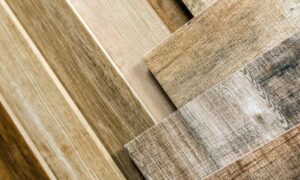For centuries, tile has been one of the most trusted and beautiful materials for our homes. It’s durable, water-resistant, and offers a timeless aesthetic that can fit any design style. We’ve always thought of it as a strong, silent, and passive surface—a beautiful but simple foundation for a room. But what if that foundation could be more? What if your floor could actively contribute to your home’s comfort, convenience, and even its ambiance?
In today’s smart home, even the floor can be intelligent. Modern technology is now being seamlessly integrated with tile flooring, transforming it from a simple design choice into a high-performance system that can warm your feet, light your way, and even play your favorite music. It’s where timeless style meets cutting-edge innovation.
If you’re planning a renovation, it’s time to start thinking about your floor as a new frontier for smart home technology. Here’s a look at the exciting ways you can take your tile to the next level.
The Ultimate in Comfort: Radiant In-Floor Heating
This is the most popular and transformative tech integration for tile, and for good reason. Anyone who has ever stepped onto a cold tile floor on a winter morning can appreciate the pure luxury of radiant in-floor heating.
How it works: A system of thin electric coils or hydronic (hot water) tubes is installed in the mortar right beneath the tiles. The system heats the tiles themselves, which then radiate a gentle, even warmth upward into the entire room.
The benefits include the following:
- Unmatched Comfort: The feeling of a warm floor is incredibly comfortable and luxurious.
- High Efficiency: It’s a very efficient way to heat a space. Radiant heating can be more efficient than traditional forced-air heating because it doesn’t lose heat through ductwork, and the gentle, rising heat feels more comfortable at a lower temperature.
- Silent and Invisible: There are no noisy fans or unsightly vents.
Smart Integration: Hidden Sensors for a Responsive Home
The real magic of a smart home is its ability to anticipate your needs. By embedding small, discreet sensors into or under your tile, you can make your floor an active participant in your home’s automation.
- Leak Detection: A small moisture sensor can be installed under the tile near a toilet, a tub, or a washing machine. If it ever detects a leak, it can instantly send an alert to your phone, allowing you to prevent a catastrophic water damage event before it happens.
- Automated Lighting: Imagine getting up in the middle of the night. A pressure sensor under the tile by your bed could detect your movement and automatically turn on a soft, low-level pathway of lights leading to the bathroom.
The Ultimate Minimalist Aesthetic: Invisible Speakers
For the true audiophile and design minimalist, this is a game-changer. New technology allows for the installation of “invisible” speakers that are placed in the wall or ceiling behind a surface, and even underneath the flooring.
These transducers work by vibrating the surface material itself—in this case, the tile—to create sound. The result is a room filled with high-quality, immersive audio with absolutely no visible speakers, grilles, or wires. It’s the ultimate way to integrate a sound system into a sleek, modern bathroom or kitchen design.
The Final Frontier: Interactive LED Lighting
While still a high-end, custom application, the integration of programmable LED lighting directly into a tile installation is the future of interactive design. This involves placing waterproof LED strips within the grout lines or even using specially designed LED tiles.
This technology can be used to create a glowing pathway to guide you in the dark, design a custom-colored shower niche that can change with your mood, and program the floor to pulse with different colors in time with your music for a party.
As home design becomes more and more integrated with smart technology, the floor is no longer just a passive surface. By thinking about how you can incorporate these innovations, you can transform your tile from a simple building material into a dynamic and functional part of your smart home ecosystem.































